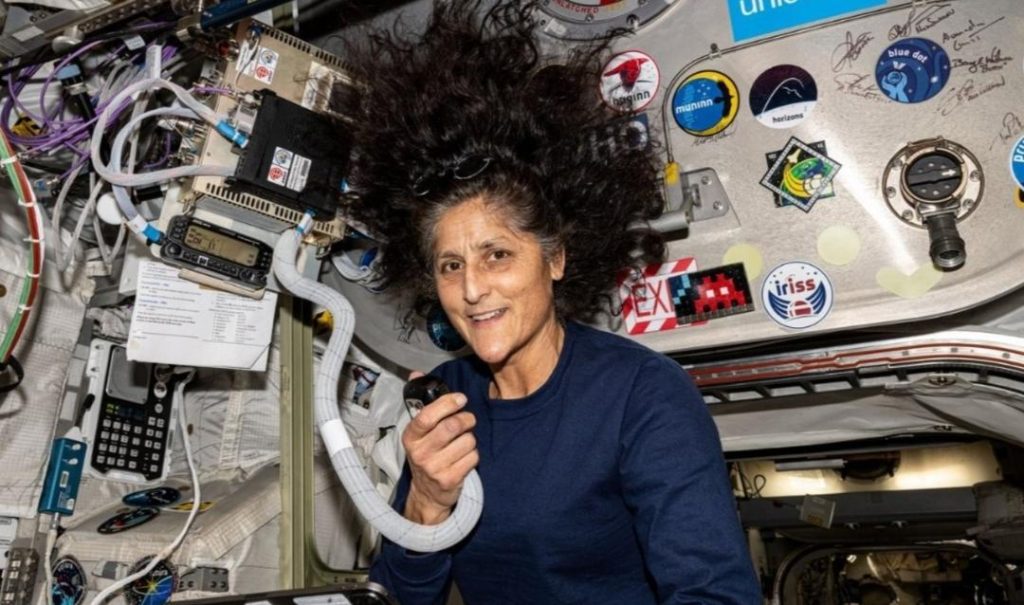
What Scientific Milestones Were Achieved by Williams & Her Team?
In recent years, NASA has made significant strides in advancing scientific knowledge and pushing the boundaries of space exploration. One such endeavor was the research conducted by Nick Hague, Butch Wilmore, Sunita Williams, and cosmonaut Aleksandr Gorbunov aboard the International Space Station (ISS). This crew, known as Expedition 68, achieved numerous scientific milestones, showcasing the incredible progress made in various fields.
Plant-Related Studies
One of the primary focuses of the Expedition 68 crew was plant-related research. Scientists have long been fascinated by the effects of microgravity on plant growth and development. To better understand these phenomena, the crew conducted a series of experiments, including the “Plant Habitat-02” and “Seedling-04” studies. These experiments aimed to investigate the effects of microgravity on plant growth, seed germination, and root development.
The results of these studies have far-reaching implications for agriculture, enabling scientists to better understand how plants adapt to changing environments and develop more efficient methods for growing crops in space. This research has significant potential for future long-duration missions, where sustainable food production is crucial for the well-being of astronauts.
Monitoring Urban Growth, Climate Change, and Natural Disasters
Butch Wilmore, a skilled photographer, was tasked with capturing thousands of images of Earth from space during the expedition. These images, taken using a specialized camera, provided valuable insights into urban growth, climate change, and natural disasters. The crew’s photographs were used to monitor changes in urban landscapes, track the effects of climate change, and respond to natural disasters.
For instance, Wilmore’s images were used to track the progression of wildfires in California, allowing scientists to better understand the impact of climate change on these natural disasters. Similarly, the crew’s photographs provided valuable insights into urban growth patterns, enabling researchers to better understand the effects of human activity on the environment.
3D Printing of Implantable Medical Devices
The Expedition 68 crew also tested the capabilities of 3D printing in microgravity. This experiment, known as “Rodent Research-42,” aimed to develop implantable medical devices, such as pacemakers and implantable cardioverter-defibrillators. The crew used a specialized 3D printer to create these devices, which were then tested on rodents.
The results of this experiment have significant implications for human health. The ability to create implantable medical devices in space could revolutionize medical care for astronauts and patients on Earth. This technology could also be used to create customized prosthetics and implants, enhancing the quality of life for individuals with disabilities.
Other Scientific Achievements
In addition to these notable achievements, the Expedition 68 crew contributed to numerous other scientific experiments. Some of these experiments included:
- Astronaut Health: The crew conducted a series of studies to better understand the effects of long-duration spaceflight on astronaut health. These experiments aimed to develop more effective countermeasures for mitigating the effects of microgravity on the human body.
- Fire in Space: The crew conducted a series of experiments to understand the behavior of fires in microgravity. This research has significant implications for fire safety on the ISS and future spacecraft.
- Robotics and Artificial Intelligence: The crew tested the capabilities of robots and artificial intelligence systems on the ISS, enabling scientists to better understand the potential applications of these technologies in space.
Conclusion
The scientific milestones achieved by the Expedition 68 crew are a testament to the incredible progress made in space exploration. From plant-related studies to 3D printing of implantable medical devices, this team’s research has far-reaching implications for our understanding of the universe and the advancement of human knowledge.
As we continue to push the boundaries of space exploration, it is essential that we recognize the incredible achievements of dedicated scientists and astronauts like Sunita Williams and her team. Their contributions have paved the way for future breakthroughs, ensuring that humanity will continue to thrive in the vast expanse of space.
Source:






